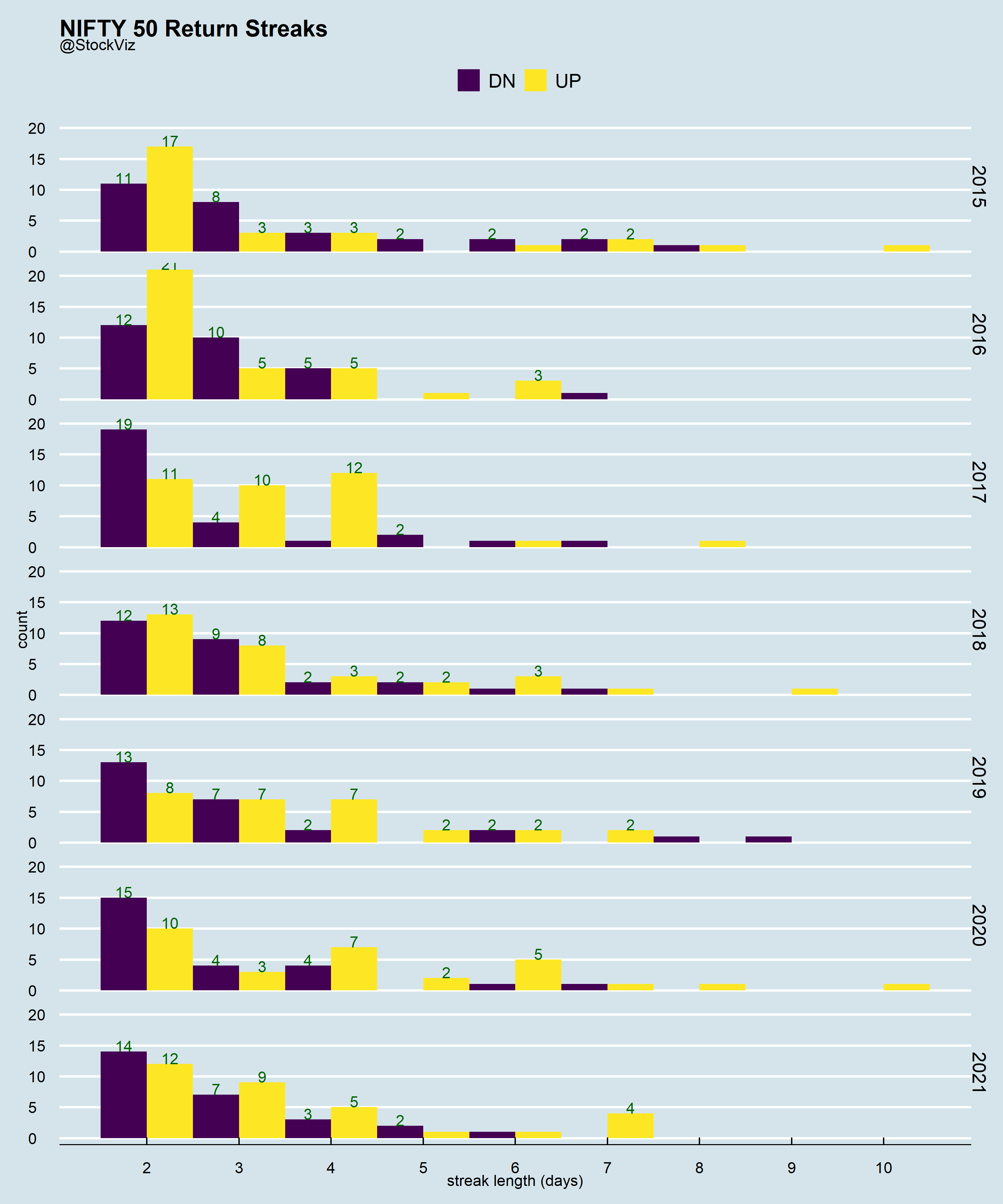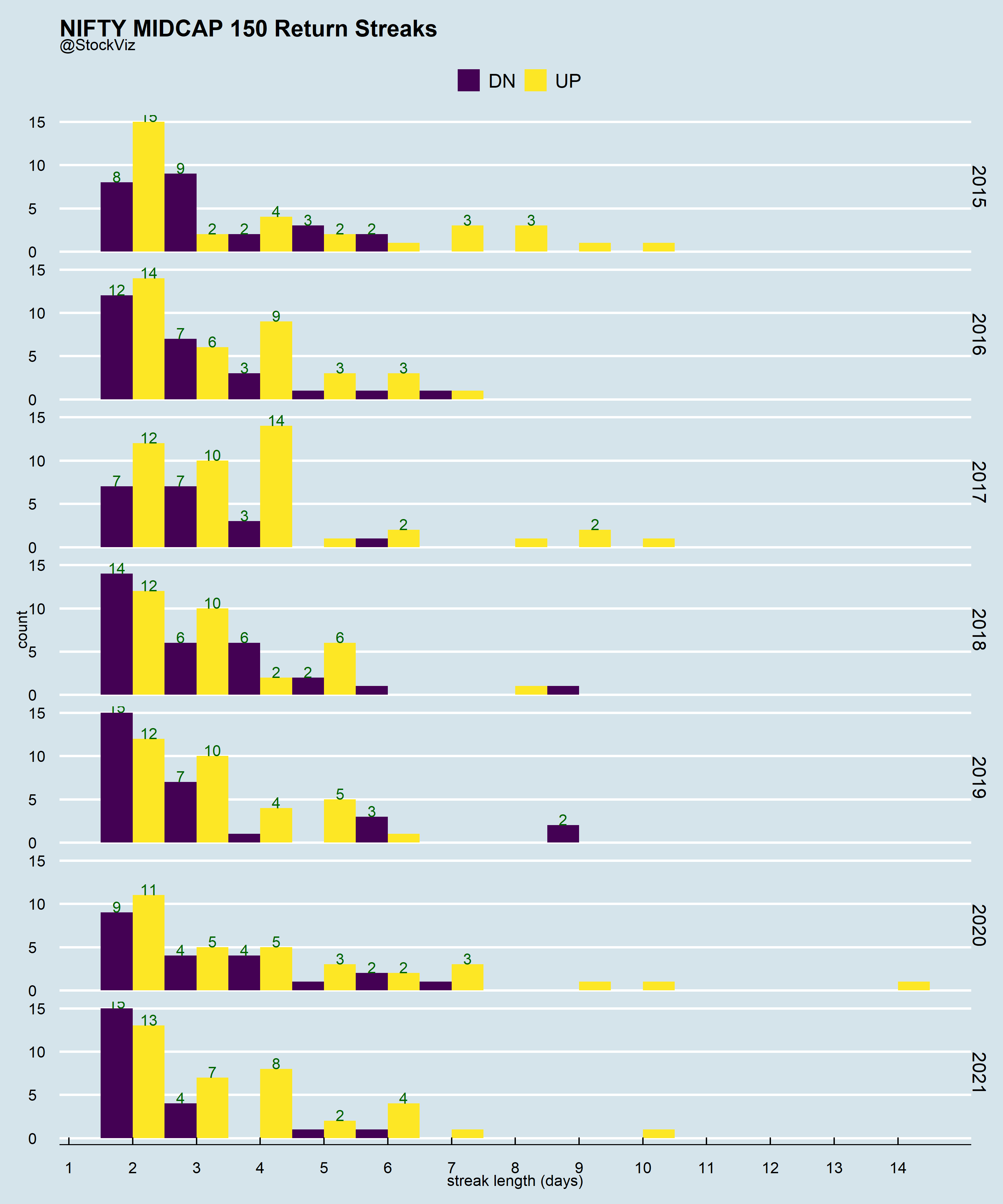Sometimes, it is useful to remove information from the data that you have.
Lets say, you have a time-series of returns: +0.001, +0.001, +0.001, +0.1, -0.01, -0.01. What if, you removed magnitude information and kept only the direction? You end up with: UP, UP, UP, UP, DN, DN. Now, you can analyze this transformed dataset using a whole bunch of algorithms designed to work on binary sequences.
Run Length Encoding (rle) is one such algo. We used it while looking for streaks (Part I, Part II.) We dismissed the backtest as a datamining artefact. Which it might very well be. However, if you believe that a timeseries can exhibit both trend and mean-reversion, then looking at it through this lens can be useful.


Stay tuned.